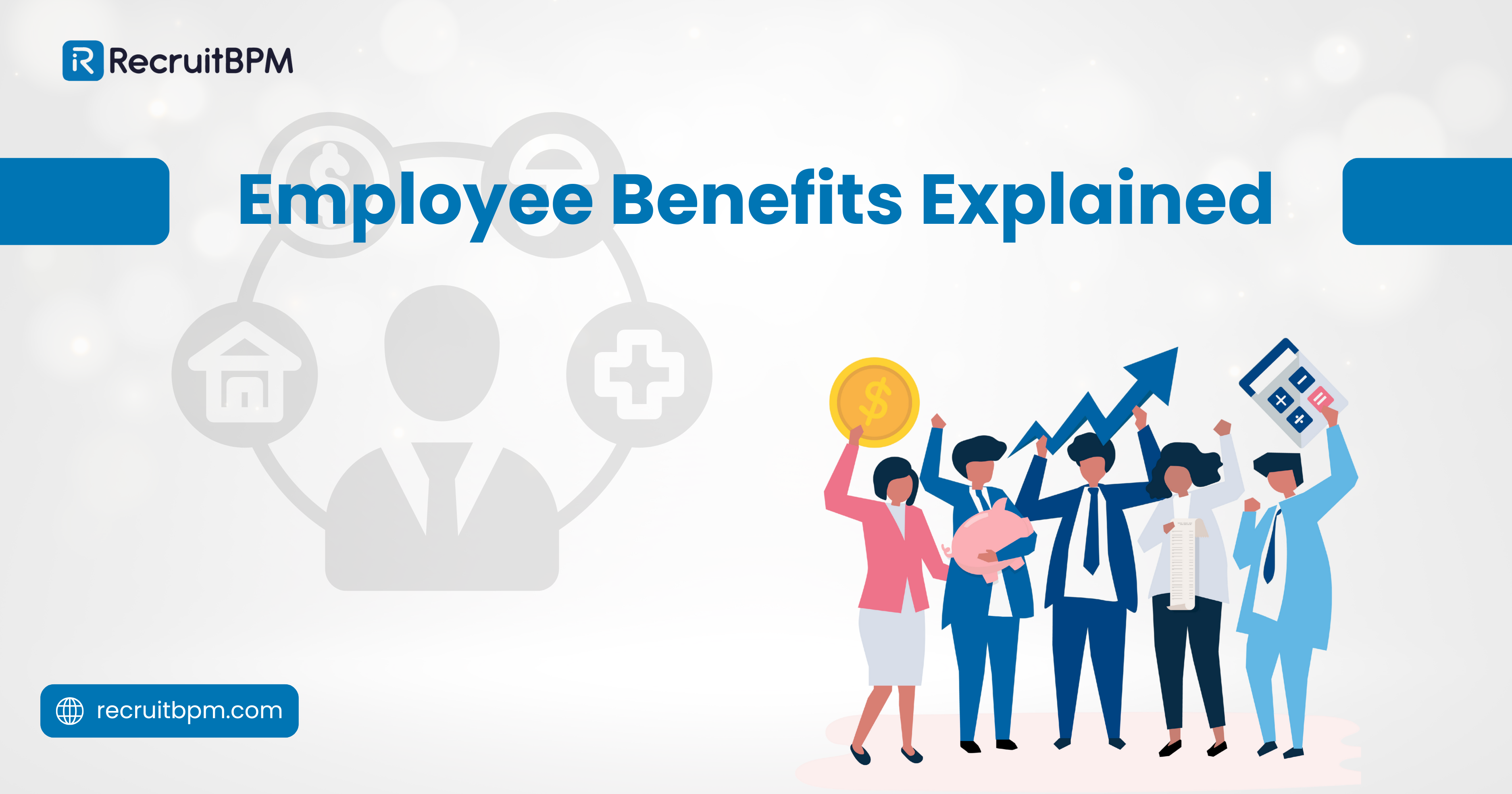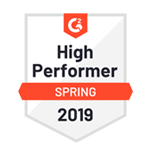Salary alone no longer determines whether candidates accept job offers or remain with employers long-term. The modern workforce evaluates total compensation packages, where benefits often outweigh base pay in terms of decision-making importance.
Recruitment agencies that understand benefits comprehensively—their types, value propositions, and strategic deployment—gain decisive advantages in competitive talent markets. Candidates increasingly reject offers with inadequate benefits, regardless of salary levels, while organizations struggling to articulate the value of their benefits lose talent to competitors offering inferior compensation but superior perks. Mastering benefits strategy separates recruitment agencies that consistently close placements from those that watch candidates accept competing offers.
What are the Benefits?
Benefits are any form of perks or compensation provided to employees beyond base salary or wages. Employee benefits are an indirect form of compensation that organizations provide to their workers through programs, policies, or services designed to enhance overall well-being, financial security, and work-life balance.
These offerings fall into two primary categories:
Mandatory Benefits
Mandatory benefits required by law and voluntary benefits employers provide to attract and retain talent. Statutory benefits include Social Security contributions, Medicare, unemployment insurance, workers’ compensation, and family medical leave, where applicable.
Voluntary Benefits
Voluntary benefits encompass health insurance, retirement plans, paid time off, flexible work arrangements, professional development, wellness programs, and countless other perks.
The benefits landscape has expanded dramatically. The SHRM Employee Benefits Survey from two years ago listed 175 available benefits, but by 2024, that number increased to 216—a 23% rise. This surge highlights the growing diversity of benefits employers now offer, from traditional options like healthcare and retirement plans to innovative perks addressing mental health, financial wellness, childcare support, and environmental sustainability.
Benefits serve multiple strategic purposes beyond regulatory compliance. They demonstrate employer investment in employee well-being, differentiate organizations in competitive labor markets, reduce turnover by increasing job satisfaction, enhance productivity through improved health and morale, and support recruitment by making offers more attractive than salary alone could achieve.
Modern Benefits
Modern benefits packages increasingly reflect personalization and choice. Cafeteria plans, flexible spending accounts, and points-based systems allow employees to select benefits matching their individual circumstances rather than receiving identical packages regardless of personal needs.
Why Benefits Matter for Recruitment Agencies?
The recruitment industry must recognize that benefits expertise directly impacts placement success rates, client satisfaction, and competitive positioning in increasingly sophisticated talent markets.
Candidate decision-making prioritizes benefits prominently
Recent research reveals that 88% of workers think their wellness is just as important as their salary. This fundamental shift means recruitment agencies cannot present opportunities solely through compensation lenses. Candidates evaluate entire packages, and inadequate benefit explanations cost placements regardless of attractive salaries.
Offer acceptance rates correlate with benefits quality
Benefits play a significant role in both the recruitment process and in driving and sustaining employee engagement. The right benefits package may get your preferred candidate in the door. Recruitment agencies placing candidates with organizations offering competitive benefits close placements faster and face fewer last-minute rejections.
Market trends reshape benefits expectations continuously
The most common benefit in 2025 is hybrid work, offered by 88% of organizations across Europe and the US today. Candidates now expect flexibility as a baseline rather than a premium perk. Recruitment agencies must stay current with evolving standards to set realistic client expectations and accurately position opportunities.
Benefits mismatches drive unexpected offer rejections
A recent Forbes Advisor survey showed that employers did not list paid time off among their top five in-demand benefits, yet 31% of employees cited it as most important. These disconnect points create placement failures when recruitment agencies don’t probe candidate benefits, priorities, or communicate client offerings effectively.
Client competitiveness depends on benefits positioning
Companies can attract top talent and build resilient workforces for 2025 and beyond by offering competitive, personal, and future-focused benefits. Recruitment agencies advising clients on benefits strategies become trusted partners rather than transactional vendors. This consultative positioning commands premium fees and generates repeat business.
Retention impacts agency reputation long-term
Benefits help employers attract and recruit top talent, enhance their reputation, and reduce turnover costs. When agencies place candidates who leave quickly due to benefits disappointment, client relationships suffer. Understanding benefits thoroughly protects placement longevity and agency credibility.
Benefits complexity requires specialized knowledge
The expansion from 175 to 216 tracked benefits represents growing complexity that overwhelms many hiring managers. Recruitment agencies providing benefits expertise add measurable value beyond basic candidate sourcing, justifying higher service fees.
Diversity in benefits demands varies by demographics
Different candidate segments prioritize different benefits. Parents value childcare support and flexible schedules, while younger workers might prioritize student loan assistance and professional development. Recruitment agencies matching candidate benefits preferences to client offerings improve placement quality dramatically.
How to Use Benefits Effectively?
Leveraging benefits strategically throughout recruitment processes requires systematic approaches that go beyond merely listing perks in job descriptions.
Conduct thorough benefits discovery with clients
Before sourcing candidates, document complete benefits packages including health insurance details, retirement matching formulas, paid time off policies, flexibility arrangements, wellness programs, professional development budgets, and unique perks. Many placement failures stem from recruitment agencies’ inadequately understanding what they’re actually selling.
Translate benefits into candidate-relevant value propositions
Don’t simply list benefits—quantify their worth. A “competitive 401(k) match” means nothing; “6% employer match on retirement contributions, adding $4,800 annually for $80,000 salary” demonstrates tangible value. Calculate total compensation, including benefits, to present a complete picture.
Probe candidate benefits priorities during intake
Ask specific questions about which benefits matter most. Do they prioritize healthcare quality, retirement contributions, time off, flexibility, professional development, or other factors? Understanding priorities allows strategic positioning of opportunities, matching candidate values.
Benchmark client benefits against market standards
Research industry-specific benefits norms to identify whether client offerings are competitive, premium, or below market. This intelligence informs realistic placement expectations and identifies gaps requiring client discussion before sourcing begins.
Educate candidates on the benefits
Many candidates underestimate the benefits’ worth, focusing primarily on salary. During offer discussions, break down the annual benefits value, including employer healthcare contributions, retirement matching, paid time off monetary equivalent, and other quantifiable perks. This education increases perceived offer value.
Address benefits and concerns proactively during negotiations
When candidates express hesitation about the benefits aspects, work with clients to find creative solutions. Can sign-on bonuses offset lower retirement matching? Will additional vacation days compensate for reduced healthcare options? Proactive problem-solving closes placements that passive agencies lose.
Create benefits comparison tools for candidates evaluating multiple offers
Develop templates helping candidates objectively compare total compensation across opportunities. Side-by-side benefits comparisons reveal which offers provide superior total value despite potentially lower base salaries.
Stay current with benefits trends and innovations
Subscribe to benefits industry publications, attend HR conferences, and maintain networks with benefits consultants. This ongoing education ensures you understand emerging benefits categories and can advise clients about competitive positioning.
Segment benefits messaging by candidate demographics
Emphasize different benefits aspects when engaging different candidate profiles. Highlight flexibility and parental leave when recruiting parents, student loan assistance for recent graduates, retirement planning for mid-career professionals, and healthcare quality for candidates with families.
Advise clients on benefits optimization strategies
Share market intelligence about which benefits drive candidate decisions in their industries. Clients investing in the wrong benefits waste resources while failing to attract talent. Strategic guidance, positioning you as a consultant rather than a vendor, strengthens relationships.
Common Challenges with Benefits
Despite their critical importance, benefits create complex challenges throughout recruitment processes that agencies must navigate skillfully to maintain placement success rates.
Benefits information access proves frustratingly difficult
Many hiring managers can’t articulate their own organization’s benefits comprehensively. HR departments control detailed information but don’t always share it promptly with recruitment agencies. This information gap handicaps candidate conversations and delays placement processes. Establishing direct HR relationships accelerates benefits intelligence gathering.
Candidate benefits literacy varies dramatically
Some candidates understand benefits deeply and ask sophisticated questions about plan details, while others barely grasp the basics. Educational approaches must adapt to individual sophistication levels. Oversimplifying for knowledgeable candidates seems condescending; overwhelming uninformed candidates with complexity creates confusion.
Language lacks standardization
Terms like “competitive healthcare” or “generous PTO” mean nothing without specifics. One company’s “excellent benefits” might be another’s baseline offering. This linguistic vagueness requires translation into concrete details, but obtaining specifics from clients challenges even experienced recruiters.
Benefits value quantification requires complex calculations
Determining the precise annual value of health insurance, retirement matching, or paid time off demands formulas that many recruiters don’t understand. Yet without quantification, benefits remain abstract rather than concrete compensation components. Developing calculation frameworks or partnering with benefits specialists helps overcome this barrier.
Client benefits often fall below candidate expectations
When client offerings lag market standards, recruitment agencies face uncomfortable conversations. Do you present opportunities honestly despite inadequate benefits, potentially wasting time on uncompetitive positions? Or do you pressure clients to improve benefits, risking relationship damage? This ethical tension requires diplomatic navigation.
Benefits complexity overwhelms concise communication
Comprehensive benefits packages span dozens of components. Conveying complete information without overwhelming candidates through lengthy explanations challenges even skilled communicators. Prioritizing which benefits to emphasize based on candidate priorities becomes an essential skill.
Waiting periods delay access
Many benefits don’t activate immediately upon hire. Health insurance might start after 30-90 days, retirement matching after six months, and full vacation accrual after one year. These delays disappoint candidates expecting immediate access. Setting accurate expectations prevents post-hire dissatisfaction.
Benefits changes create mid-recruitment complications
Organizations modify benefits mid-year, sometimes after recruitment agencies have presented opportunities to candidates using outdated information. These changes require awkward updates and may alter candidate interest levels. Confirming benefits information remains current throughout lengthy recruitment cycles prevents surprises.
International benefits differences complicate global recruitment
Benefits, norms, legal requirements, and candidate expectations vary dramatically across countries. Recruitment agencies operating internationally must understand region-specific benefits landscapes. What’s competitive in one market may be inadequate in another despite identical roles.
Benefits administration quality impacts satisfaction
Even excellent benefits packages become frustrating when the administration is poor. Slow claim processing, confusing enrollment systems, or inadequate benefits support create negative experiences that drive turnover. Recruitment agencies can’t easily assess administrative quality during placement processes, yet it significantly impacts long-term satisfaction.
Gig economy challenges traditional benefits models
Increasing numbers of workers operate as contractors or freelancers without access to traditional employee benefits. This shift creates expectations mismatches when recruiting talent accustomed to contractor arrangements into traditional employment, or vice versa. Understanding different benefits paradigms across work arrangements becomes necessary.

















